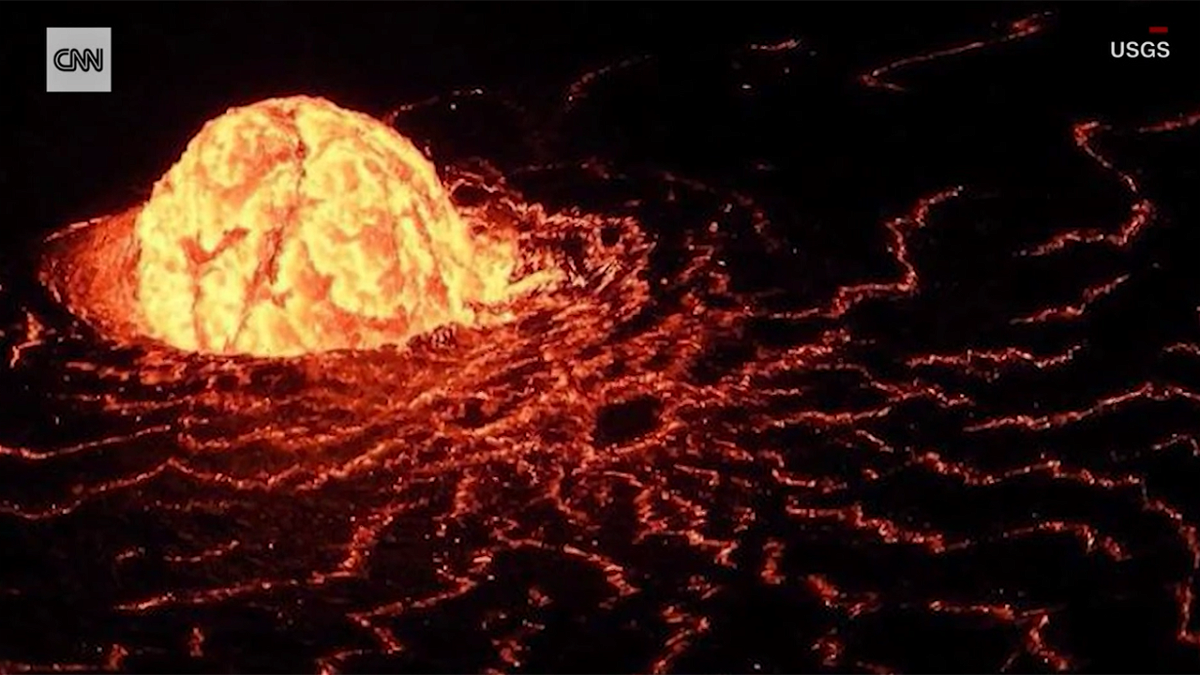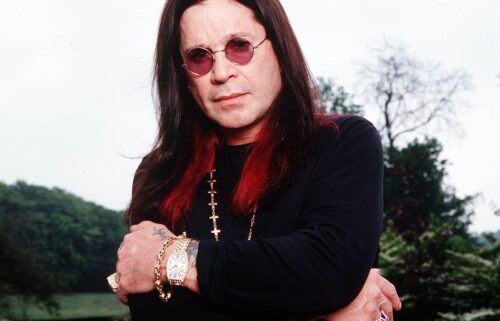How the return of lava has brought hope to Hawaiʻi’s recovery

Five days before Christmas, Cheryl Gansecki, a volcanologist at the University of Hawaiʻi Hilo, was in bed when a small earthquake shook her awake sometime after 9:30 p.m.
She checked the webcams at the summit of the Kīlauea Volcano, and her eyes went wide when she saw it -- the bright, bold glow coming from the crater.
The lava. It had returned.
She promptly made the 45-minute drive to the crater rim, adjacent to the Visitors Center at Hawaiʻi Volcanoes National Park. By the time she arrived at 10:45 p.m., word had spread far and wide.
"Tons of people were already there, and there were traffic jams," Gansecki said.
The last time Kīlauea spewed lava was more than two years ago in the summer of 2018, when it mercilessly flowed through neighborhoods and destroyed more than 700 homes.
Still, many felt compelled to go and see. Hundreds of cars showed up within a few hours, according to the park. It was a mix of curious locals, scientists, photographers and business owners.
They gathered at the Kīlauea Overlook, where a brilliant, orange glow illuminated the crater, reflecting against the green of the trees and the brown of the rock.
Everyone was asking variations of the same questions that night: What would this eruption become? Would it stabilize and provide an opportunity for the island's economy, which has been devastated by the pandemic, to rebound? Would it entice people to travel to Hawaii and see one of nature's greatest displays?
There was no way for anyone to know as they went to sleep that night, but flash forward to today, and optimism is bubbling up across the island.
At this moment, there are no signs of sudden decline or dangerous escalation of the eruption, according to Matt Patrick, a research geologist with the US Geological Survey (USGS). The USGS hypothesizes the eruption will stay stable in the short term, with the lava remaining within the cozy confines of the summit crater, safe for all to experience.
Which means that, oddly enough, the return of the hot, potentially destructive lava has brought hope that 2021 will be a better year than 2020 in tourism circles.
A spark for tourism
Jason Cohn, president of Hawaiʻi Forest & Trail, an adventure tour company, also got out of bed that night to see the eruption. He drove two and half hours from his home near Kona, optimistic it would bring about renewed interest and new business, as it had in past eruptions.
It didn't take long for that premonition to come to fruition.
The very next day, he began receiving calls about his volcano tours, which had been shut down because of a lack of demand during the pandemic. Now, they're back up and running.
It was a similar story over at Paradise Helicopters, who were able to reopen their Covid-closed Hilo location thanks to increased demand for chopper rides over Kīlauea.
Hawaiʻi Volcano Vacations, a vacation rental agency near Kīlauea Crater, has reported an uptick in its bookings and length of stay since the eruption started.
And, not surprisingly, Hawaiʻi Volcanoes National Park's visitation has more than doubled from its 2020 pre-eruption levels.
For Ross Birch, executive director of the Island of Hawaiʻi Visitors Bureau, the new eruption is, at the moment, a great opportunity and boost for the state's tourism industry, which is down 75% overall from the previous year.
"It's a breath of fresh air from what we've been going through," Birch said.
The morning after -- sorting out what happened
The mood was uncertain the night the eruption began, and by morning, the volcanic gas -- or "vog" as the locals call it -- had settled into the skies above the island.
But, geologically speaking, things began to clear up as volcanologists at the USGS Hawaiian Volcano Observatory painted the public a picture of what happened the previous night.
The warning signs began a few weeks prior, when what's called an "intrusion" of lava was detected moving into the crater, under the surface, increasing in pressure. They noticed that swarms of earthquakes were becoming more frequent.
It reached its tipping point on the night of December 20. The ground cracked open and the pressure pushed lava into the crater, fountaining as it rushed down the side walls, red and orange and bright white.
It was just the beginning of a spectacular show.
The lava flowed down into an area where a water lake had been forming for two years, 430 feet wide, 885 feet across and 160 feet deep.
It boiled off in 90 minutes.
Lava continued to pour in through Christmas and New Year's, forming a lava lake that grew deeper by the day.
On January 5th, a remarkable phenomenon known as a Dome Fountain appeared in the crater. The dazzling video went viral on just about every news outlet.
Since then, the lava's rate of flow has fluctuated up and down, but it's never stopped. After nearly a month and a half of constant filling, the lava lake is now nearly 700 feet deep and rising.
And, if it keeps rising, things could get even more interesting.
Visiting the volcano -- what to expect
Right now, the best way to lay eyes on the lava is from a helicopter.
Hovering above on a clear day, one can see it coming out of the crater walls and filling the lava lake below. The flight zips around old eruption sites on Kīlauea, too, and narration from the pilot helps put everything in perspective.
As of now, because of the depth of the crater and the angle of the viewing areas, getting up in the air is the only way to see the actual, physical lava.
But if the thought of a chopper ride makes you queasy, don't worry: More accessible views could be on the way.
According to USGS's Patrick, the level of lava has been rising more than three feet a day. If the rate of fill continues, the lava lake would become visible from public viewing areas inside the National Park as early as April.
Combined with the successful distribution of a vaccine, it brings hope of a big spring. The state of Hawaiʻi already has a pre-arrival testing program in place that allows visitors to avoid quarantine upon arrival, and preliminary discussions suggest that a separate program for vaccinated travelers could begin as soon as next month.
How to see the 'glow'
In the meantime, the incredible nightly "glow" at Kīlauea allows observers to get a feel for the radiance of the lava and the reflection of its light as it burns at more than 2,000 degrees Fahrenheit.
"Volcanoes evoke such a primal feeling," Gansecki opined. "They're so big and so powerful, and just getting up to it and feeling a little bit of that power is pretty amazing."
After dark, make your way to the Kīlauea Overlook, or another spot along the Crater Rim Trail. Immediately after sunset is the most popular time to witness the glow come alive, but there's always room to spread out; those looking for complete solitude should shoot for sunrise (the park is open 24 hours). Adventurers should consider hiking the mile-long trail out to Keanakākoʻi.
Either way, bring layers, a flashlight and a rain jacket. Kīlauea Crater is more than 4,000 feet above sea level and much colder than the coast.
Brief yourself before your visit by watching the "Kīlauea: Hawaiʻi on Fire" documentary, and don't forget about the cultural component.
The Kīlauea caldera -- also known as Kaluapele -- is a sensitive place for Native Hawaiians. It's the home of Pele, an elemental deity in Hawaiian mythology.
Bobby Camara, a naturalist and former park ranger who pens a local volcano blog, urges visitors to understand that the national park preserves the spiritual heritage of Native Hawaiians, in the same way that, say, Mesa Verde National Park in Colorado preserves the archaeological heritage of the Pueblo Indians.
It's a special place at all times, to be sure, but especially when Pele leaves the light on for us to see that she's at peace.
"Pele is back in the summit crater, in an area where she's not threatening any homes or livelihoods," said Jessica Ferracane, a park employee for more than 10 years.
"For me, that's a feeling of reassurance."






